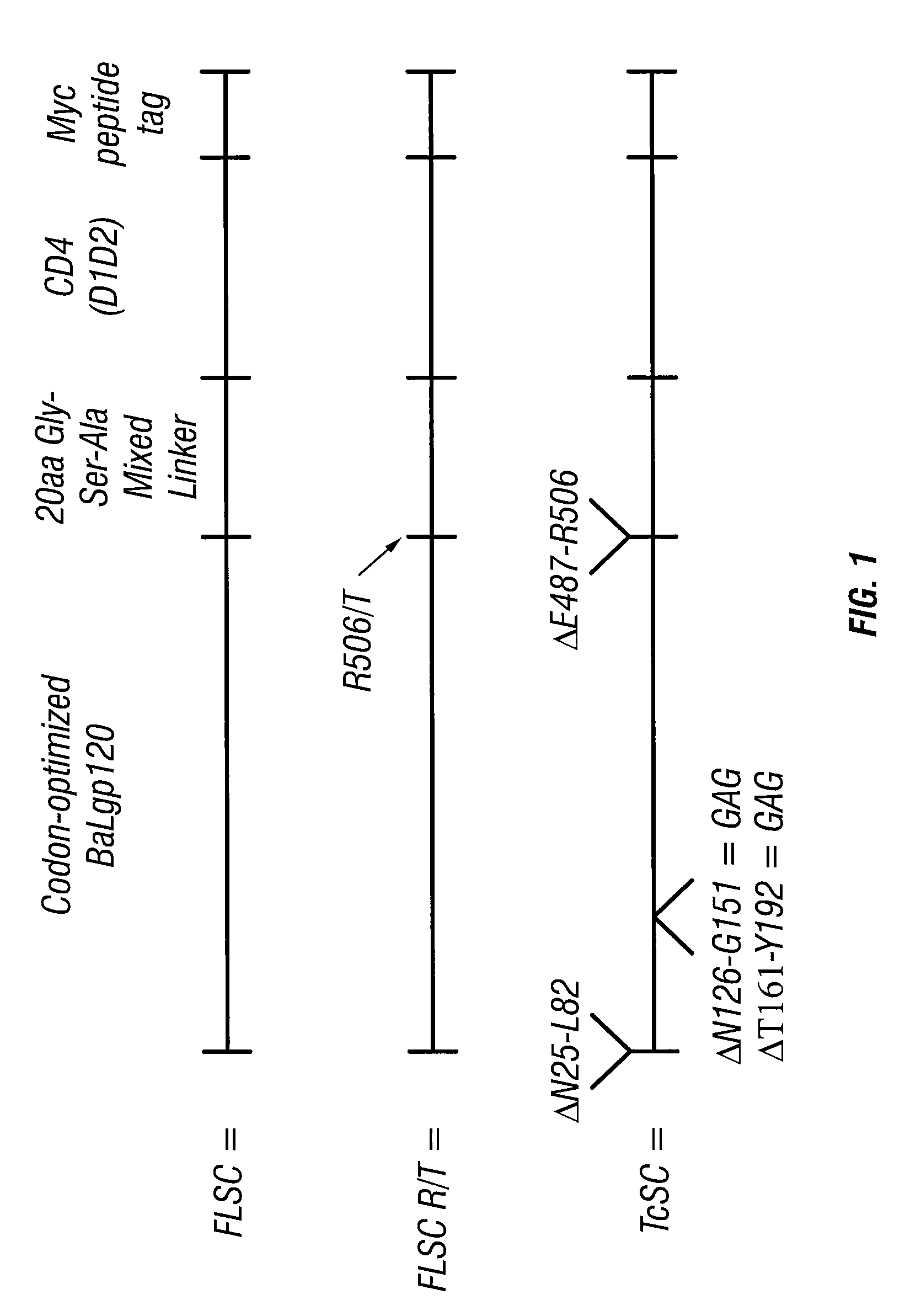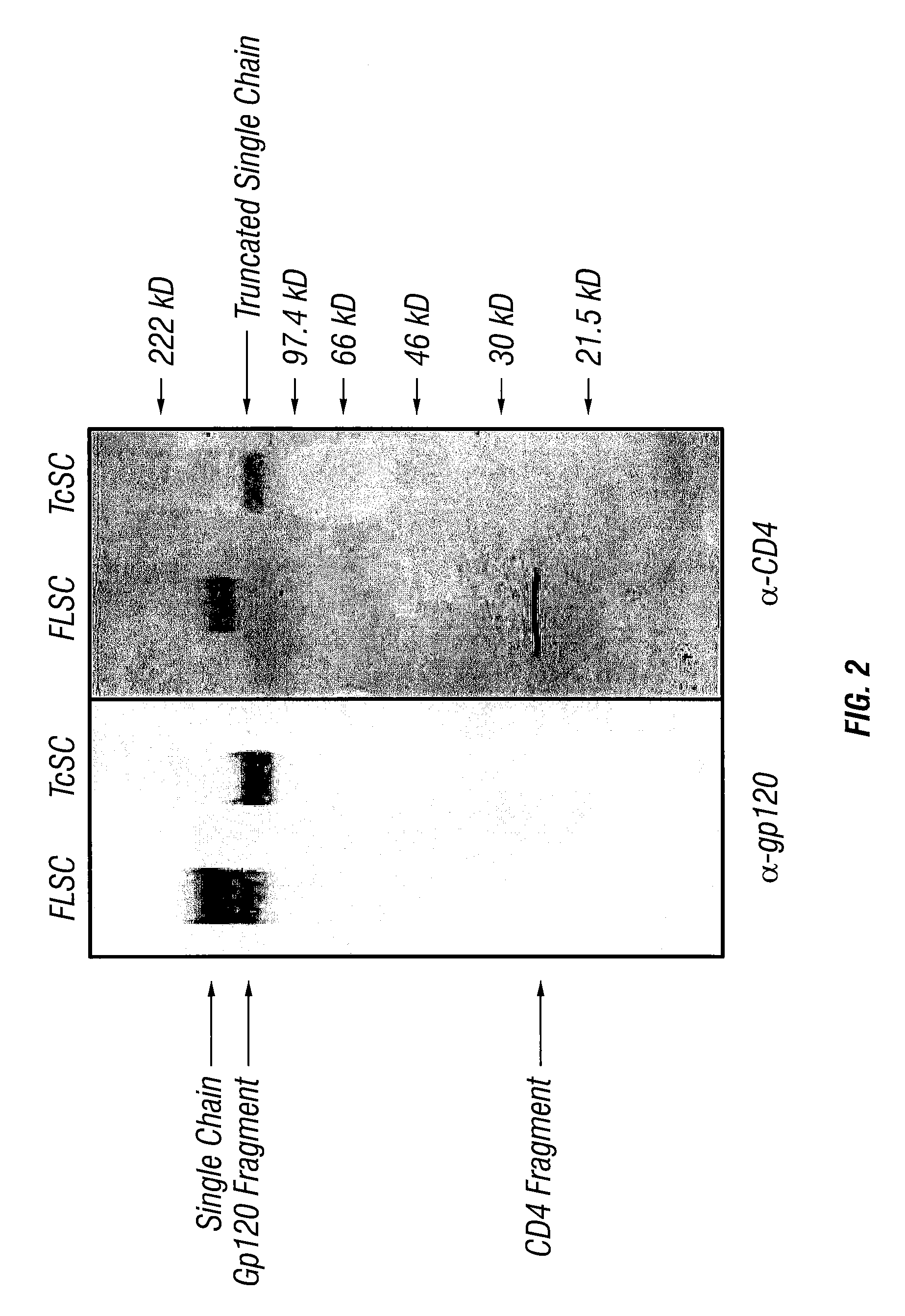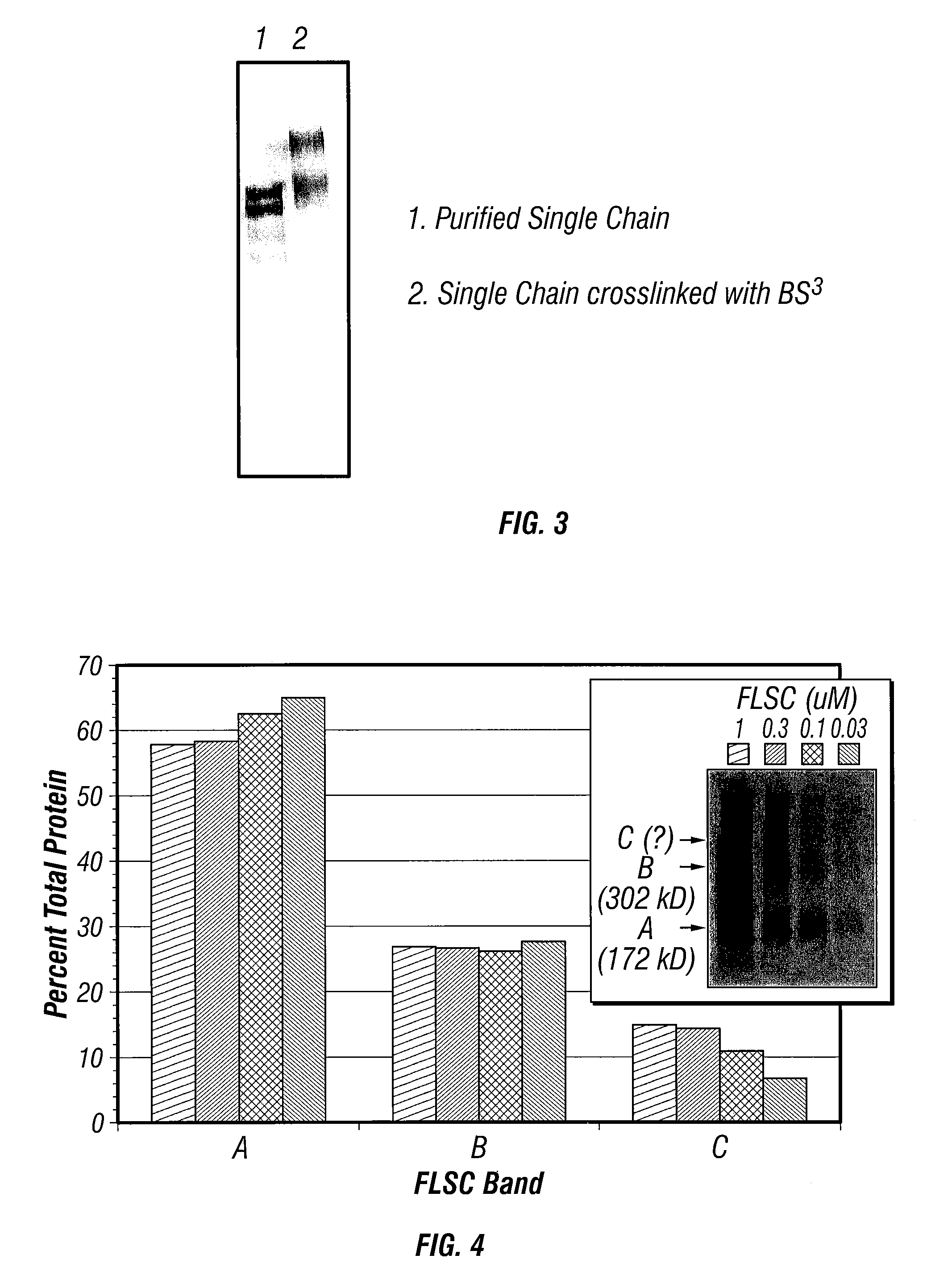Virus coat protein/receptor chimeras and methods of use
a virus and chimera technology, applied in the field of chimeric polypeptides, can solve the problems of elusive success strategy in achieving this goal, and achieve the effect of preventing virus infection and ameliorating virus infection in the subj
- Summary
- Abstract
- Description
- Claims
- Application Information
AI Technical Summary
Benefits of technology
Problems solved by technology
Method used
Image
Examples
example i
[0125]This Example describes the construction of a polynucleotide encoding a single chain gp120-CD4 chimeric polypeptide FLSC or TcSC. The strategy for building a single chain complex is based on the placement of a 20 to 30 amino acid linker sequence between the C terminus of gp120 and the N terminus of CD4. Analyses of the crystal structure of modified gp120 bound to soluble CD4 and 17b Fab (Dwong, P. D. et al., Nature, 393: 648-59 (1998)) using Swiss PDB Viewer suggested that a chimeric molecule should be capable of intramolecular interactions leading to formation of a gp120-CD4 complex.
[0126]A single chain nucleic acid encoding a gp120-CD4 chimeric polypeptide was constructed by arranging the respective coding sequences in the following order: (1) at the 5′ end, a synthetic, codon encoding gp120 of the macrophage-tropic HIVs, BaL; (2) a sequence encoding a 20 amino acid linker consisting of glycines, alanine, and serines; (3) sequences for soluble CD4 domains 1 and 2 (D1D2); and ...
example ii
[0130]This Example describes the transfection of cells with the polynucleotide encoding the gp120-CD4 chimeric polypeptide and the characterization of the expressed soluble polypeptide. Recombinant pEF6-FLSC or pEF6-TcSC was transfected into 293 cells using Fugene, according to the manufacturer's protocol (Boehringer-Mannheim). Stable tranfectants were obtained by selection with 5 ug / ml blasticidin. A stable cell line (293-SC) was cultured under different conditions, and the production of chimeric polypeptide evaluated by immunoblot analysis using a mixture of our anti-gp120 monoclonal antibodies (Y. H. Abacioglu et al., AIDS Res. Hum. Retroviruses, 10: 371-81 (1994)) or anti-human CD4 polyclonal sera (T4-4) (K. C. Deen et al., Nature, 331: 82-4 (1998); R. L. Willey et al., J Virol., 66: 226-34 (1992); NIH AIDS Reagent Repository).
[0131]Briefly, cell culture supernatants containing the chimeric polypeptide were collected and boiled in SDS-PAGE loading buffer (75 mM Tris, 2% SDS, 10%...
example iii
[0143]This Example describes data demonstrating the binding of gp120-CD4 chimeric polypeptide to several different antibodies reactive with gp120 and CD4. The binding of gp120 to CD4 causes conformational changes in the molecule leading to the exposure of the co-receptor-binding domain. Therefore, antibodies directed against epitopes in this domain should react strongly with properly folded single-chain molecules. In order to determine exposed epitopes in chimeric molecules, antigenic properties of FLSC and TcSC molecules were compared. Purified FLSC and TcSC were subjected to immunochemical analyses by antigen capture ELISA. In brief, BaLgp120, gp120-rsCD4 complexes or single chain chimeric molecules were captured using a purified polyclonal sheep antibody (International Enzymes, Fallbrook, Calif.) raised against a peptide derived from the C-terminal 15 amino acids of gp120, D7324 (J. P. Moore et al., AIDS Rex Hum. Retroviruses, 4:369-79 (198×)), adsorbed to the matrix. The D7324 w...
PUM
 Login to View More
Login to View More Abstract
Description
Claims
Application Information
 Login to View More
Login to View More - R&D
- Intellectual Property
- Life Sciences
- Materials
- Tech Scout
- Unparalleled Data Quality
- Higher Quality Content
- 60% Fewer Hallucinations
Browse by: Latest US Patents, China's latest patents, Technical Efficacy Thesaurus, Application Domain, Technology Topic, Popular Technical Reports.
© 2025 PatSnap. All rights reserved.Legal|Privacy policy|Modern Slavery Act Transparency Statement|Sitemap|About US| Contact US: help@patsnap.com



